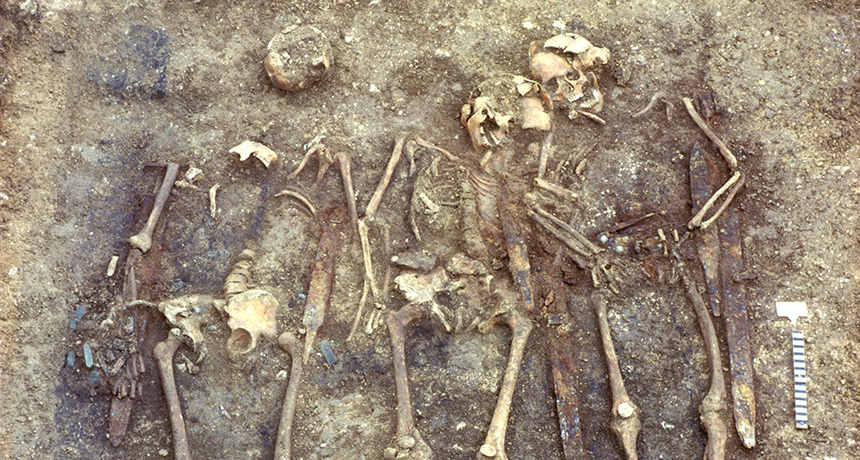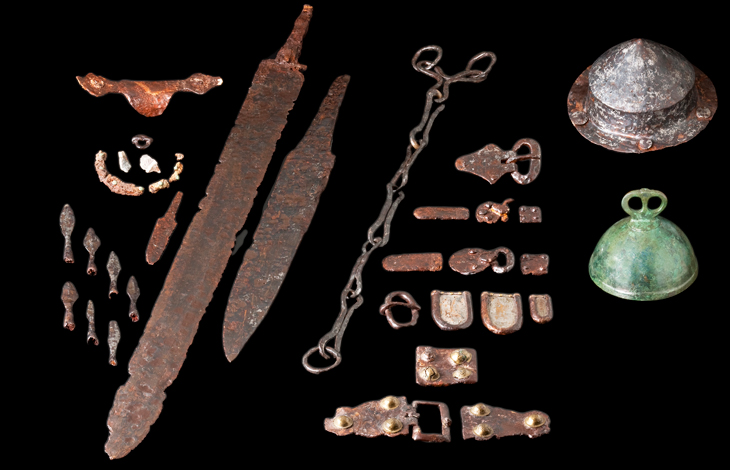German skeletons hint that medieval warrior groups recruited from afar
DNA analyses of European graveyard finds are shedding new light on the Frankish Empire

ROAD WARRIORS A new study of human remains, including these skeletons, at a medieval European graveyard indicates that they came from a politically powerful warrior household that traveled widely to muster additional members.
Landesamt für Denkmalpflege im RP Stuttgart







